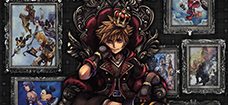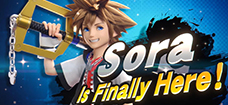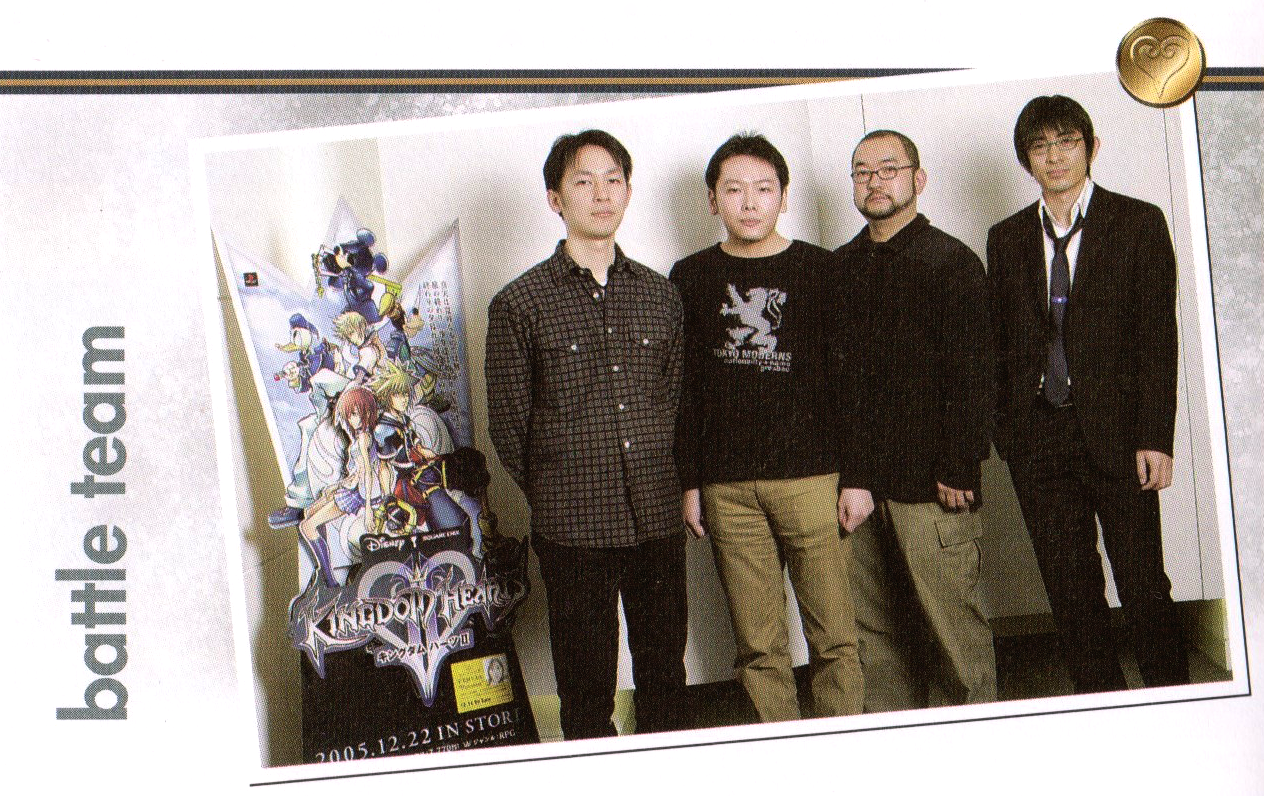A Look Back: KH2 Ultimania, Battle Team Interview
- Details
- Published on August 10, 2022 @ 05:21 pm
- Written by Sign
The next interview we'd like to highlight is the Battle Team interview from the Kingdom Hearts 2 Ultimania!
Interviewees:
Yuichi Kanemori, Planning Director
Kentaro Yasui, Main Programmer
Tatsuya Kando, Animation Director
Syuichi Sato, Art Director: VFX
The controls themselves remain simple while providing the player with more options.— How did you decide what to change from KH1 to KH2?
Kanemori: We made adjustments to the parts that couldn't be elaborated on when we made KH1, in order to make things even easier to control. The biggest thing was the Δ button, which is now being used to execute reaction commands. The command window was necessary to make more options available to the player, but as the number of commands grow, some people will find it difficult to manage the selection. This time, we've made it possible for players to select specific commands using only the Δ button, so even though there are more types of commands than in KH1, I think we've successfully managed to increase the number of options available to the player during battle without also increasing the number of times needed to use the directional keys to get to them.
Yasui: Based on my experience with KH1, I knew that we were going to have a hard time, making a bunch of additions at the end of development (laughs).
I created a tool to make it easy for the lead planner to add skills and make minor numerical adjustments. In an action game, there are many parts that need to be adjusted once the game is actually playable, so if we had to use a program to directly process skill behaviors and whatnot, it'd require a lot of back-and-forth between Kanemori and myself. Doing it this way would inevitably cause us to take too much time when we tried to create a large number of techniques, like we did for this game. That's why we left it to Kanemori to make these minor adjustments.
Kanemori: We were able to tweak the values while actually running the game, so I was able to make adjustments right up until the very last minute to ensure that each ability performed exactly as we envisioned it, from the dwell time of Sora's jump to the speed of his weapon swing.
— There sure are a lot of abilities. Which ones do you recommend?
Yasui: Finishing Plus is pretty good, even though we put it in there as a joke (laughs).
Kanemori: It is pretty cool, isn't it? I came up with that ability after we finished making all of the other moves, more or less. I just thought it'd be neat if players could perform one finisher, and then immediately follow up with another.
Yasui: Abilities do tend to be made on a whim like that (laughs).
Sato: The only things we figure out in advance are stuff like the names.
Yasui: Negative Combo is another ability we talked about in jest, at the beginning.
Kanemori: It seemed like something that'd be fun to have, so I thought I'd just put it in for the time being, but...
Yasui: Surprisingly, it does have many uses.
Kanemori: Dodge Roll, an ability that was in the original game, has been left out of this one, but the reason isn't all that deep. I removed it rather nonchalantly, thinking it won't be needed this time around. I was surprised to find that many people actually missed it.
— The summon roster has changed since the last game. How were these four characters chosen?
Kanemori: Lilo & Stitch was a fairly new movie back when we first started development, so there were a lot of people asking for Stitch within the company. We made the decision to include him at a very early stage.
As for Chicken Little, when we were trying to decide who to choose as summons, we found ourselves struggling to find the perfect fit. I thought, in that case, it might be interesting to use a character from a movie that hadn't been released yet.
Kando: It was a spur-of-the-moment decision. Since it's a brand new movie, we didn't have any material to work with, so I had to watch the trailer over and over again to make the motions (laughs).
Kanemori: Genie is inherently able to transform, so we wanted to try and make use of that skill. Originally, we planned to have him transform into a martial artist or a guardsman. In the end, various aspects proved difficult to realize, so after some back and forth, we decided to settle on Form Changes.
Peter Pan was chosen because he was a popular character in the original game. The item used to summon him is found in a treasure chest in Port Royal, which offers a "connection" through the shared use of pirates.
Representing growth in motions to match the growth in appearance
— What changes have you made to the characters' battle motions?
Kando: Even if the characters' appearances haven't changed too much, we've completely remade their internal data. Take Sora, for example. He's now able to wield Keyblades in both hands. Also, in KH1, I tried to highlight the energetic and childish qualities in his movements, but seeing as he's grown up since then, I've added a sense of coolness to them. However, I've limited the extents of it so that his movements aren't as cool as Riku's (laughs). The characters' proportions have gotten bigger, so to match the growth in their appearances, their internal growth is also expressed through their motions.
— Sora adopts many different poses when he undergoes a Form Change.
Kando: The poses for Valor and Wisdom were decided at a relatively early stage. However, when it came to Master and Final, it was difficult to envision swords and magic being wielded simultaneously, so we came up with various ideas and went through a process of trial and error. Anti-Form was handled by the staff who created the original motions for the Shadow in the first game in order to get an idea of how the Heartless move, so I think we were able to capture that vibe well.
— Have you made any major changes to the effects compared to the original game?
Sato: In KH1, each effect was created separately, but this time we established a number of themes. For example, Nobodies have an edgy design with an overall sharp image, so when they appear or attack, the effects resemble thorns. Donald's limits have a fireworks theme, so we made the effects look like fireworks and skyrockets. In that sense, I think they all go quite well together.
— Some of the effects that you were asked to do must have left you wondering, "How am I supposed to express this?"
Sato: The only thing I remember is that I was always troubled, so I can't really name anything in particular (laughs).
Kando: The number of reaction commands and limit effects increased at a rapid pace. I guess it's a prime example of something that has no ceiling (laughs).
Sato: I knew from the initial plans that the number would increase, so I went ahead and made the effects that I expected to be used, before anyone had even asked for them. Like, "We're going to have potions, so..." (laughs). That being said, it's impossible to get them all done in advance. Reaction command-related effects can include as many as 230 different types for a single boss enemy, so... I'm glad we were able to get everything done in time.
Yasui: As with abilities, the motions and effects were made into tools so that they could be added and adjusted by their respective staff. For example, when it came to effects, we had each member not only create the images for them, but also work out how they'd be implemented into the game, such as how a particular gimmick would appear when executing an attack, what direction something would bounce in when it hits a wall, etc. It may have taken a lot of work, but in doing so, I think we were able to achieve exactly what we envisioned. It was a lifesaver for us programmers, but the whole process was fairly give-and-take (laughs).
— We've talked about the things that've changed since the first game, but what about the elements unique to Kingdom Hearts that you've retained?
Kanemori: We were particular about the versatility in movement that could be achieved with just the O button (T/N: X in the overseas version). If the same move is performed every time the O button is pressed, the game would be rather monotonous. Also, I think it was a good idea to make KHCOM inbetween KH1 and 2, rather than jump directly to KH2. KHCOM was made for a completely different hardware (Game Boy Advance), right? Yet in spite of this, I think we were able to successfully replicate the same feeling of playing a Kingdom Hearts game, as well as the core controls that the series is known for.
Games are not defined by their hardware or systems. I believe the most important part of the KH series is to have a sense of control that feels good to anyone from the moment they pick up the controller.
"Horde battles" are achieved by mixing effects in with real characters
— When I first saw the 1,000 Heartless "horde battle" in Hollow Bastion in the trailer video, I wondered if such a thing could actually be realized...
Yasui: I thought so too (laughs). But then we showed it in the trailer .
Sato: It's often the case that you show off footage for something first and later find yourself having to commit to it (laughs)
Yasui: After the trailer was released, Tetsu (Director: Tetsuya Nomura) asked me, "We're moving forward with the premise that there will be a horde battle. Is that alright?" We hadn't had any meetings prior to discuss it, so we just started experimenting with various ideas. We were able to figure out how to tackle it fairly quickly, but it took a lot of hard work and adjustments to make it look like you're actually fighting a large number of enemies. Specifically, enemies in the distance are displayed as part of the effects and mixed in well with real characters nearby.
In other words, rather than focusing on actually showing all 1,000 enemies, we simply devised a way to make it look like you're fighting a lot of them.
Kando: For the enemies in this horde battle, we reduced the number of polygons and skeletons (framework that moves the character) in order to minimize the amount of data as much as possible. For example, in the case of the Armored Knight, whose design combines its right arm with a sword, it only has four skeletons in total: two on the legs, one on the torso, and one on the right arm attached to the sword. At first, I was worried about whether it'd be able to move properly with so few skeletons, but being a humanoid, I think it manages to work pretty well. And for the Surveillance Robot floating in the air, there are two skeletons: one on the torso, and one on the disc circling beneath it.
— The series of battles with Xemnas, the final boss, is quite amazing. At the proposal level, I would have thought it wasn't feasible, but you actually managed to make it work.
Kando: Regarding the Xemnas battles: when we were in the latter stages of development, Nomura said he wanted to fight against the city itself. At first I thought it might be a bit of a stretch, but everyone started coming up with loads of ideas, so I said, "Alright then, let's do it!" We were getting real pumped up about it, and then Nomura said, "You're actually able to do it? I just thought it'd be nice if you could" (laughs).
Sato: As the leading effects staff, it was such a large-scale battle that I hoped they wouldn't do that again. The enemy was so large that effects couldn't be applied to it, not to mention the battle itself had special specifications, so my team had a pretty hard time with it.
Yasui: For the shot of Sora and Riku fighting on the ship, the programmer who worked on the Gummi Ship provided me with a lot of know-how, such as how to present the scene to make things easy to understand in a 3D shooting space, which was a great help.
— Based on what I've heard, you started making the Xemnas battle around the end of August?
Yasui: We worked on it until about the end of October.
Sato: And by the time we finished making the effects for it, it was November (laughs).
(T/N: KH2 released in Japan on December 22, 2005.)
Secrets of this title that only they know:
Kanemori: Roxas can also learn Finishing Plus. Since it requires leveling him up to almost LV50 at a minimum, few people will actually use it, but it has been properly balanced.
Yasui: Every time you lose a battle during the investigation of the Seven Wonders in Roxas's chapter, the damage he inflicts is doubled, tripled, and so on, while the damage received is halved. This is a safety measure for those who are not good at action.
Kando: Bulky Vendor's reaction command was originally a different one altogether. I said, "What's the point of having a gacha machine if you can't turn the handle?!" and made them add an action to do so.
Sato: In the beginning, there was an item called "Hero's Medicine" that restores the Drive Gauge during battle, which I created the effects for. It wound up getting scrapped, but I still have the data close at hand.












okhi12
August 10, 2022 @ 06:51 pmOffline